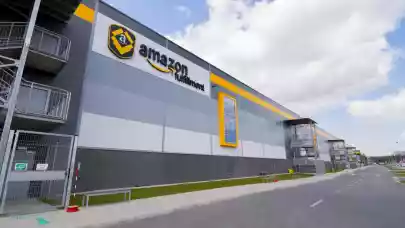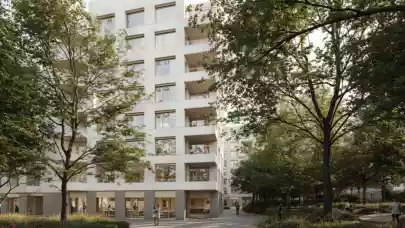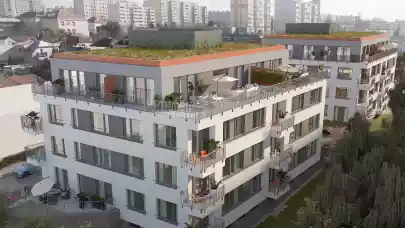
The rapid growth of e-commerce is changing the way warehouses are being built. In many BTS buildings, automated or semi-automated racking systems and robots are deployed for product storage and picking, says Krzysztof Czekalski, Technical Director in the Industrial & Warehouse Department at Cresa.
BTS projects are rising in popularity. Are they a viable option for retailers too?
Yes, subject to certain conditions. Warehouses need to meet ever-stricter technical standards required by retailers. If no suitable space is found on the market, some retailers will consider the development of a tailor-made facility meeting their needs in terms of location, technical specification and a delivery timeframe. These will include food retailers – for them, deep-freezing, cooling and maintaining stable temperatures are key to business operations. Adaptation of an existing building to such requirements could be costly with the end result sometimes failing to meet all expectations. That’s why some food retailers opt for construction of specially-designed warehouses featuring technological solutions they require. Examples include Kaufland and Carrefour, who had BTS schemes developed by Panattoni in Bydgoszcz.
Could an unusual location also be a reason for developing a BTS warehouse?
It’s often the main reason. For instance, a retailer may need a warehouse servicing stores in a specific area (centre of gravity) that lacks modern warehouse space or where developers have no lands. That’s what happened in Bolesławiec, where a developer bought land, obtained all the required administrative decisions and built a BTS warehouse for H&M’s e-commerce operations.
BTS schemes are also developed in unusual locations due to a tight labour market with a limited pool of skilled workforce and high labour costs. That’s why firms thinking of hiring many staff look for locations offering recruitment opportunities and relatively low labour costs.
Do developers delivering BTS warehouses construct schemes taking account of tenants’ requirements and locational preferences?
Yes. They usually deliver single buildings, but some BTS projects are also developed in warehouse parks where schemes are constructed on an existing piece of land to meet non-standard requirements.
What is the effect of e-commerce growth on warehouse building?
A vast majority of brick-and-mortar retailers have either gone or are about to go online. Direct product delivery to the end-consumer requires a different approach and more advanced logistics technologies compared to deliveries to large-scale stores. Amazon and Zalando are the precursors of this trend in Poland, where e-commerce is growing at a rapid pace, having a huge impact on the industrial and warehouse market. This has resulted in new types of developments, including distribution centres, cross-docks and small urban warehouses for last mile delivery.
What do online retailers actually need?
Amazon, for example, needs mainly taller buildings, higher than the standard ten metres of net height. Its warehouses feature high-tech solutions, including automated or semi-automated racking systems and robots for product storing and picking. Amazon’s biggest warehouses employ approximately 1,000 people who are also provided large welfare facilities including locker rooms and showers in addition to office space. Another unusual requirement is a large parking area of approximately 100,000 sqm for passenger cars and buses. Amazon now operates five high-tech logistics centres in Poland: in Poznań, Szczecin, Sosnowiec, and two in Wrocław. Similar-type requirements are reported by Zalando, whose new Gryfino warehouse developed by Goodman varies in height, measuring up to 16 metres in some places. Zalando is also having a large distribution centre developed near Łódź and for Zalando Lounge in Olsztynek.
How much more expensive is it to lease a BTS warehouse? What’s the minimum lease term?
Many factors have an impact on rent differentials. The more non-standard and non-modifiable features in a building, the greater the risk of releasing problems. It’s the same with location – a warehouse in core warehouse locations will be released more quickly than schemes in less accessible areas. That’s why tenants going for BTS schemes in less popular locations have to make long-term commitments of between 10 and 15 years, sometimes for up to 20 years. In core locations, leases could be shorter, for 7-10 years, provided that a building meets standard technical specifications such as typical column height and spacing. If a tenant intends to operate in a warehouse for three to five years, they will certainly have to consider the option of adapting existing buildings to their own needs.
Are there tenants going for upwards of 20 years?
Yes, this is a growing trend, but they focus on build-to-own warehouses (BTO), especially when they invest heavily in technologically advanced solutions or a building is of strategic business importance. What’s more, this trend is likely to intensify following amendments to tax and accounting regulations (IFRS 16) that are anticipated to take effect in January 2019 as the construction of a BTO facility could outweigh the benefits of a long-term lease.
Why has Cresa introduced BTS and BTO project development advisory services?
There’s a growing number of tenants opting for BTS or BTO projects to take operational efficiency to higher levels. As technology advances, tenants looking to construct modern warehouse facilities require detailed information on all aspects of project development. This is where a technical specialist steps in to carry out a feasibility, identify strengths and weaknesses of a development project, supervise all procedures of obtaining administrative permits, analyse direct and indirect development costs and finally select an appropriate general contractor or developer. The key to a successful project lies in the full understanding of all technical risks, including commercial terms of proposed options, and comprehensive process management.
Krzysztof Czekalski has nearly 20 years’ experience on the commercial real estate market and is a Technical Director in the Industrial & Warehouse Department in the Polish office of Cresa.



